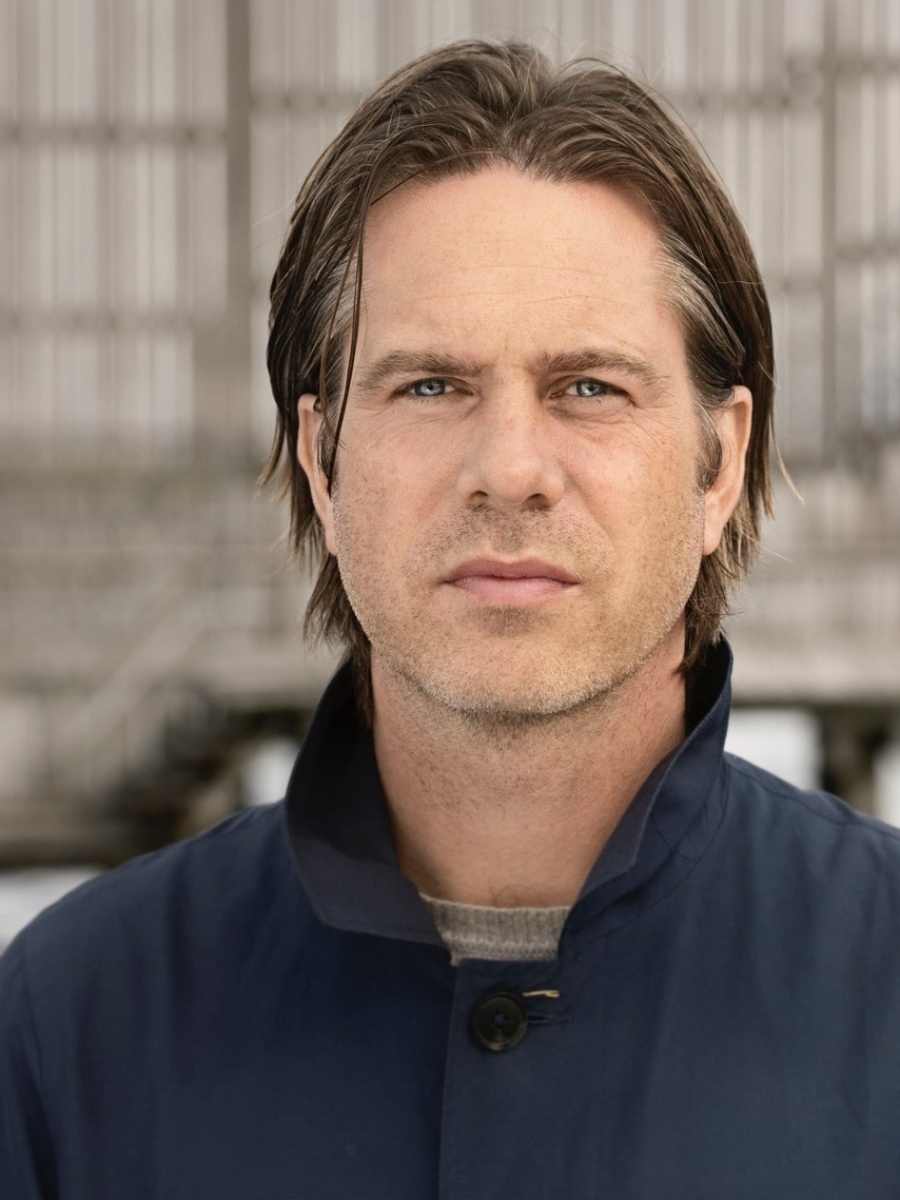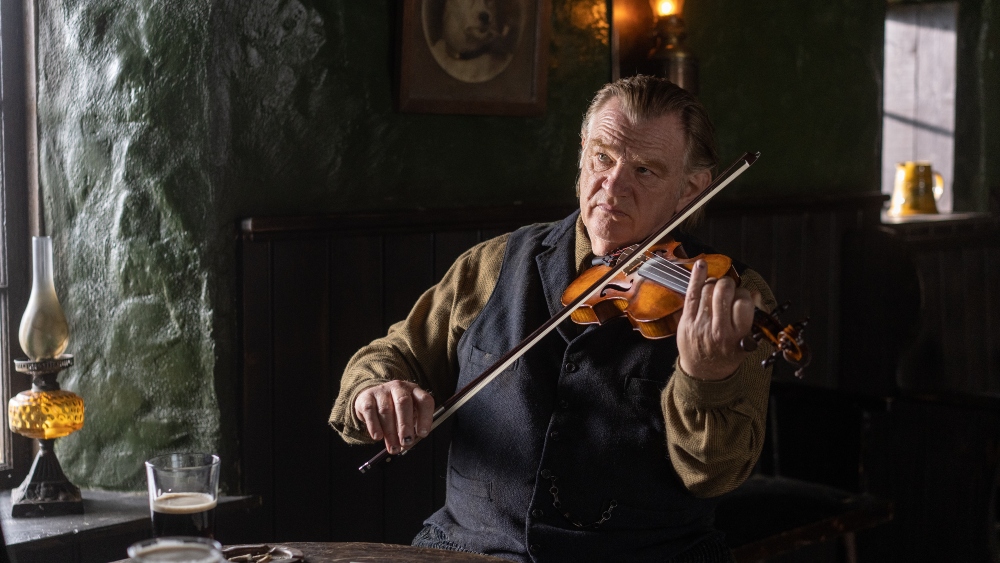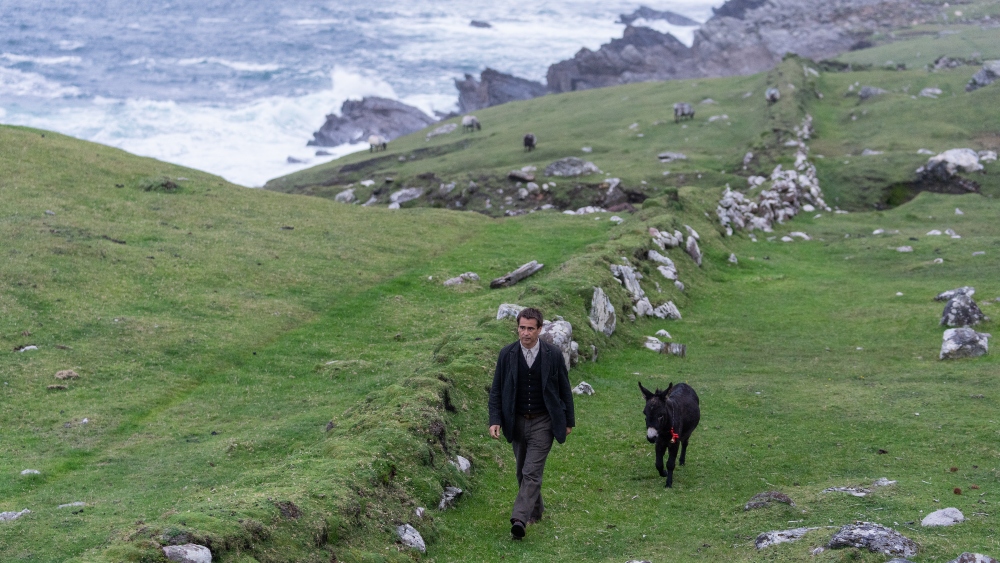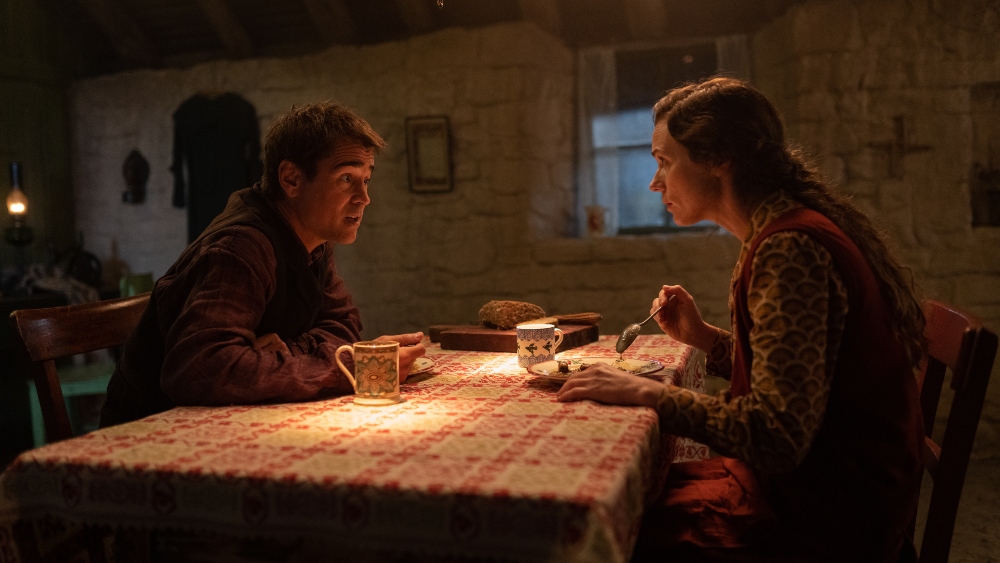When The Banshees of Inisherin Editor Mikkel E. G. Nielsen, ACE learned he had been nominated for an Academy Award, the exciting news was nonetheless somewhat bittersweet. After all, Nielsen joined the production under tragic circumstances after Director Martin McDonagh’s go-to editor Jon Gregory passed away in September 2021, just weeks after principal photography had begun.
Born in Copenhagen, Nielsen’s involvement was considered a coup, as he had recently won an Oscar for cutting Amazon’s critically acclaimed drama Sound of Metal, becoming the first Danish film editor to win that particular honor. His other distinguished credits include Cary Fukunaga‘s Netflix movie Beasts of No Nation, Robin Wright‘s feature directorial debut Land, and Nikolaj Arcel‘s Oscar-nominated international film A Royal Affair, and he has won Danish Film Award for his work on King’s Game and Reconstruction.
As accomplished an editor as he is, Nielsen was very humbled by the opportunity to work with McDonagh and help mold his Irish tale The Banshees of Inisherin by balancing the comedy and the drama that takes place among the stunning landscapes of the islands of Inishmore and Achill Island, which doubled for the fictitious Inisherin.
Nominated for nine Oscar nods, including Best Picture, the film takes place in 1923 during the Irish Civil War and follows two close friends, Pádraic and Colm, played by Oscar nominees Colin Farrell and Brendan Gleeson, who are on the precipice of ending their lifelong friendship after Colm’s epiphany that he’d rather be alone, playing his fiddle, than pass the time with his best friend. Devastated and rejected, Pádraic can’t seem to take the hint, prompting Colm to threaten to cut off his much-needed fingers should his friend persist in his unwanted communication. You’ll have to see the movie to find out what happens next.
Below the Line spoke with Mikkel E. G. Nielsen via Zoom from London, where he was editing his next project, Lee, starring fellow Oscar nominee Andrea Riseborough as fashion model-turned-war photographer Elizabeth “Lee” Miller. Nielsen illustrated how he found the tone of The Banshees of Inisherin, which he described as mythological in nature, and he also explained the juxtaposition of the ugliness of the story against the beauty of the setting. He also discussed what he was trying to achieve emotionally with the characters and their surroundings, including Pádraic’s beloved pet donkey Jenny, as well as the other animals strewn about the film.

Below the Line: Congratulations on your Oscar nomination. Where were you when you received the news?
Mikkel E. G. Nielsen: Thank you. I was editing. I was with my assistant, who was also my assistant on Banshees, so that was very nice. I was very surprised and obviously very happy. I mean, it’s strange because, coming from a small country, it’s never seemed like a possibility to see it that way. But then little by little you get to work on these foreign movies, for me, and suddenly you get recognized, especially by your own editors pointing at you, so that’s very special. And I’m extremely grateful and honored, for sure.
BTL: Would you agree that the Editor also shares in the nomination for best film as well?
Nielsen: Yes. It’s a really special project and it’s a very nice way to be able to get recognized [for] it, for sure, for all of us.
BTL: So take me back to the beginning. How did you get involved with the project?
Nielsen: I was approached right when they started shooting, and because of the sad circumstance that Jon Gregory, who was Martin’s normal collaborator, had passed away, I was then asked if I would potentially come in and do the edit. I didn’t know Martin at all. I didn’t know anyone from production at all, and I was in Copenhagen. I don’t know what they had seen (of my work), but potentially it was because I did Sound of Metal and won the Academy Award. That could potentially be a good reason, but I don’t know it for a fact. But I went and had dinner with Martin, and we agreed that we should try and make this work. So I went back to Copenhagen. I did a full pass while they were shooting. So I would show him a first assembly of the whole film, and then from there on, we would sit together little by little to find the film, and the tone, and the pace, and all of these things together. It was such a great work experience.

BTL: So how did you find the tone and the pace in your first pass?
Nielsen: The first pass is more about getting organized and getting into the material. Everyone has been on set, and Martin has written the script. He has everything in his head. So this was my way of just entering the project, and the more organized I am and the more I have found these different balances, the more I have to find the balance of the film. Little by little, that’s when we get together and I can show you the different options. I showed the full assembly, which was completely like the script, of course, and it was very long, but I also tried small pieces — whatever Martin needed.
BTL: This film is so beautifully shot. How did the landscape become a character of sorts?
Nielsen: When I met Martin, he was like, ‘I really want to make a beautiful Irish movie. I want to make the most beautiful Irish movie.’ [chuckles] You know, ‘make this possible.’ They had been very inspired by a lot of westerns and so [there was] the whole idea of trying to find almost like a mythological fable that you enter a universe through the skies and you find this island and you go with your main character. Then you bring in nature, and the island as a character together with all the animals as well, in montages. I mean, a lot of the scenes have also been shot in these beautiful surroundings, but then also adding the nature and the island as a character to this whole story so it just gets its own tone.
BTL: That’s interesting because you are watching this film and you’re swept away by the beauty of it, and then there are those darker moments when Brendan Gleeson’s character is chopping his fingers off. How graphic did Martin initially plan to make those moments?
Nielsen: I mean, we don’t show it, right? We don’t show them. We demonstrate the throwings (of the fingers), but I don’t think he was interested in that. We wanted to keep it very sparse in the sense of how much you actually see. I am very allergic to that, I would say. [chuckles] I never watched anything. [It’s] too much. I was probably a good audience to try the things on, but that was never really the intention. It’s more about the character and what the character does and how you see it from a distance. With your main character, you’re always with Pádraic, and then little by little, you get the sense that you try to balance those characters as well, and you make it almost like a battle between the two of them.
And then maybe with the montages and Carter [Burwell‘s] music, little by little, you get invested. Because it’s such a simple premise but a very complex story, it automatically raises a lot of questions, and it also takes a lot of unpredictable turns in the film. Perhaps the idea was that you gradually invest more and more of yourself in these characters. And, at least for myself, I used myself as a test to see if I could see myself in both characters, as well as how much I saw myself in Colm and how much I saw myself in Pádraic.
And then, focusing on Siobhán (Kerry Condon, also Oscar-nominated for Best Supporting Actress), the sister, as the film’s heart. So when she leaves and she’s out of there, it’s almost like it then becomes a full tragedy, and there’s not really any hope of fun after that at all. I also try to see if it’s possible to hold back information sometimes because I think we engage ourselves as humans little by little if we don’t overdo it with information. If we don’t know everything, then we get curious about what’s actually going on. “Why is he doing that?” [And I’m thinking,] “How do we get in and out of the scenes?”

BTL: Speaking of seeing yourself as the characters, how did you see yourself in Jenny the donkey, if at all?
Nielsen: On the island, you treat the animals similarly, and they’re always there, very trustworthy by your side. They would never leave you, just like Colm’s dog and Jenny, and also the birds and everything else that walks around. I would say we gave them a lot of love, and then we added more and more animals toward the end.
BTL: You mentioned Carter Burwell’s score. Can you describe how a film score can inform your edits?
Nielsen: You try all the things, and then you ask, “Does the scene need a score? Do we need to color the scene with a score in the dialogue scenes?” It became clear that having these montages between the scenes where you can bring some of your own emotions into it and look at the beauty of the island, as well as bring the island and the animals into it, is far more interesting. After Siobhán leaves, that’s where we start coloring everything. That’s where we add it, to darken the mood of Pádraic and what happens to him. We went into a little more of what you would call a “traditional” way to work with score, where we could color the scenes.
But then also, what’s interesting about Carter’s music is that he has created a lot of themes. He has created a friendship theme, an island theme, and Dominic (Barry Keoghan, Oscar-nominated for Best Supporting Actor) and Siobhan, all the different characters almost have a small theme, along with the church and the pub and all these things. These themes can color it, and you can play with the different emotions of the different characters in it. That was really interesting — how to find the simplicity in that and how to find the balance that almost feels really simple on the surface, but when you open it up, it’s quite a complex way to make everything work so elegantly. I think we managed to do it.
BTL: How would you describe your process when you were editing with Martin?
Nielsen: I have this idea that if I don’t have an opinion as late as possible in the process, I’ll also be as open as possible. It’s more about exploring things, and Martin really knew his material and his characters, so he was very open to trying things and then at least exploring them, so there’s a reason for why we did what we did, [and] the way we tell it. I think that’s extremely important to do in the edit, at least to know what is possible, so you don’t come [in] and say, “Why didn’t you just do it like this?” I would say we’ve turned [over] every stone and tried a lot of things in the edit, and we’ve also held back on a lot of things.

BTL: Give me an example of where you held back in the edit.
Nielsen: Martin’s script is so rich that it’s like a music piece. For example, after Siobhan leaves, if you look at the scenes, there’s very little comedy in the scenes. We began to cut a lot of that because you could really feel the characters and didn’t need these moments. So you really invested in the characters, how sad it went, and how tragic it became with these characters not being able to see what they did to each other.
BTL: So you were kind of laying on the sadness pretty thickly, I guess you would say.
Nielsen: Yeah, we were — especially in the last third of the film, for sure.
BTL: How do you fulfill the director’s vision?
Nielsen: It’s a little bit like you paint with all the elements in filmmaking, right? It’s so easy to color things and take [them] in a [certain] direction. It’s more about making everything a circle of finding the whole film, and then, little by little, you find these small details that add up to the whole thing. And then you find that simplicity in the thing. It’s like, you shape and you focus that material, and you shape the sequences and find out what’s right for the film. And then, hopefully, that is also what the director’s intention is.
But then, little by little, you also do that with sounds, so if you listen to the soundscape of the film, it’s a very quiet film. But then also because the ambiance is so pushed away in the background. Then you can have these small plot sounds that really stand out and the dialogue that really stands out. You can have these beautiful images of two people sitting with huge nature in the background, with waves and all that, and you almost can’t hear it. But you see Jenny the donkey walking with him and you can hear that sparse sound of that small bell, so she almost gets, like, a dialogue with Pádraic. And you hear it — it’s almost, like, giving her a voice.
The film finds its own rhythm and language, and then it’s about that balance of trying to find the pace of that beautiful music piece that the dialogue is. Little by little you find that film. And then if it’s all character, character, character, and you find those characters, you are also willing to invest and go with that story.
The Banshees of Inisherin is now streaming on HBO Max and available to buy or rent on all major VOD/digital platforms.





